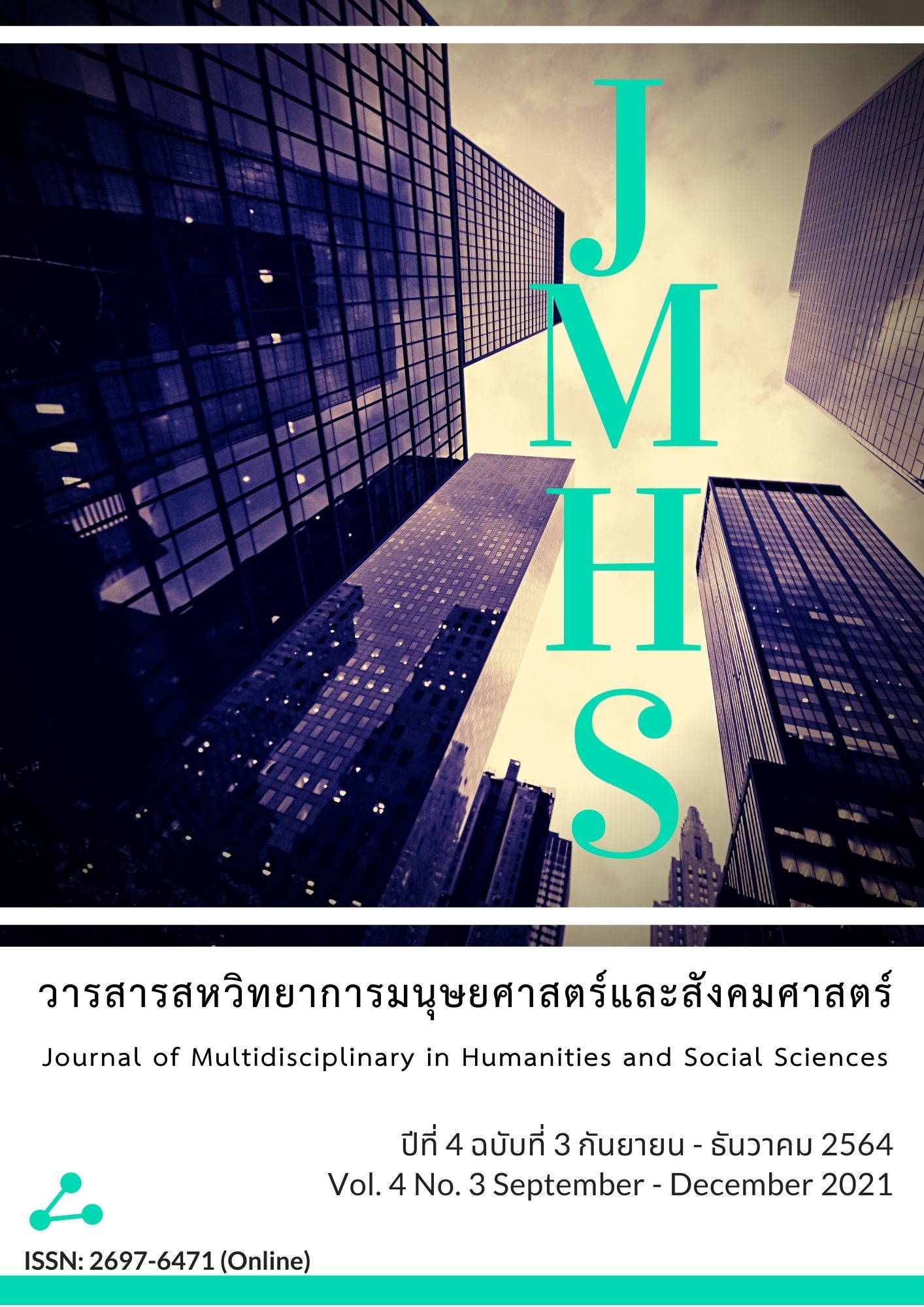History, Story and Legend: Values, Roles and Identity of Kui Ethnic Group at Ku Village, Ku Sub-district, Prangku District, Sisaket Province
Main Article Content
Abstract
The purposes of this research were 1) to study the history, story, and legend of the Kui ethnic group at Ku village, Ku sub-district, Prangku district, Sisaket province; and 2) to study the identity of the Kui ethnic group at Ku village through history, story, and legend that reflect values and roles, 12 informants are community leaders, ritual leaders, religious leaders, and cultural leaders, the data were collected through in-depth interview, focus group of 3 times and descriptive.
It was found that history of community at Ku village had migrated from Sikhorapum district, Surin province to flee from an epidemic and search for a new workplace. The history of the community indicated the identity of the community that had to be adjusted to live as a rule, treaty, and joint agreement in the community. The group identity of Kui people at Ku village that has seen clearly that is the belief of people in community expressing through local rites and belief in supernatural powers such as ancestor ghosts, grandfather's ghosts, guard ghosts, and sacred things in the house. They are the center that bind people together in community to be united. The group identity of Kui people at Ku village still reflects the mantle that has roles to explain the origin of crowds and rites, roles in educating to train rules, behavior, customs, and maintain social standards, creating a ban for people in the community must behave as the role in being way out for anger of people occurred from social rules and roles in entertaining people in the community. Besides, it still reflects the values on among entertainment, wisdom, strengthening relationships, morality, and education about society and culture.
Article Details
Views and opinions appearing in the Journal it is the responsibility of the author of the article, and does not constitute the view and responsibility of the editorial team.
References
กาญจนา แก้วเทพ. (2553). ศาสตร์แห่งสื่อและวัฒนธรรมศึกษา. กรุงเทพฯ: เอติสันเพรส โปรดักส์.
กุหลาบ มัลลิกะมาส. (2537). ความรู้ทั่วไปเกี่ยวกับคติชนวิทยา เอกสารการสอนชุดวิชาภาษาไทย 8. (พิมพ์ครั้งที่ 3). กรุงเทพฯ: มหาวิทยาลัยสุโขทัยธรรมาธิราช.
ชานนท์ ไชยทองดี. (2558). เรื่องเล่าศักดิ์สิทธิ์กับการสร้างพื้นที่ทางวัฒนธรรมในจังหวัดศรีสะเกษ(รายงานผลงานวิจัย). มหาวิทยาลัยราชภัฏศรีสะเกษ.
จิตร ภูมิศักดิ์. (2544). ความเป็นมาของคำสยาม ไทย ลาว และขอม และลักษณะทางสังคมของชนชาติ ฉบับสมบูรณ์. กรุงเทพฯ: ศยาม.
รัชนี กาวิ และ คณะ. (2558). นิทาน ตานาน ภูมินามและประวัติศาสตร์: บทบาทหน้าที่ คุณค่า และอัตลักษณ์ของชุมชนท่าผาปุ้ม อำเภอแม่ลาน้อย จังหวัดแม่ฮ่องสอน(วิทยานิพนธ์ศิลปะศาสตรมหาบัณฑิต). มหาวิทยาลัยราชภัฏเชียงใหม่.
ศิราพร ณ ถลาง. (2545). ทฤษฎีคติชนวิทยาวิธีวิทยาในการวิเคราะห์ตำนาน-นิทานพื้นบ้าน. กรุงเทพฯ: โรงพิมพ์มหาวิทยาลัยธรรมศาสตร์.
อิศรา จันทร์ทอง. (2537). บทบาทหน้าที่ของพิธีแก็ลมอของชาวกูยสำโรงทาบ อำเภอสำโรงทาบ จังหวัดสุรินทร์(วิทยานิพนธ์ศิลปศาสตรมหาบัณฑิต). มหาวิทยาลัยศิลปากร.
เอกวิทย์ ณ ถลาง. (2530). ภูมิปัญญาชาวบ้านสี่ภูมิภาค วิถีชีวิตและกระบวนการเรียนรู้ของชาวบ้านไทย. นนทบุรี: มหาวิทยาลัยสุโขทัยธรรมาธิราช.
Durkheim, E. (1964). The Division of Labor in Society. New York: Free Press.
Seidenfaden, E. (1952). The Kui people of Cambodia and Siam. Journal of the Siam Society, 39(2), 144-180.


